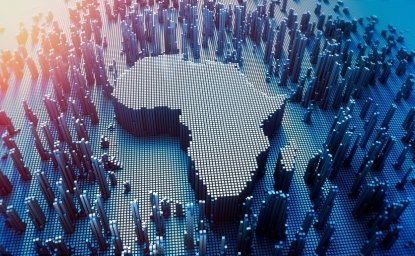
A blog of the Science and Technology Innovation Program
On January 11th, the White House Office of Science and Technology Policy (OSTP) officially designated 2023 the Year of Open Science, an opportunity to formally recognize the impact of open and equitable research. Open science, in its many forms, has many benefits. It can increase the return on the public’s investment in science, more closely connect science to societal priorities, and enable large, interdisciplinary teams to address interconnected challenges.
The OSTP Open Science fact sheet recognizes the potential for open science to build on investments in research and innovation, and “provide access to the results of the nation’s taxpayer-supported research, accelerate discovery and innovation, promote public trust, and drive more equitable outcomes.”
The multi-agency initiative kicks off the year with a series of actions to advance open science at the federal level. For example, Commerce, Energy, NASA, and Defense Information (CENDI) and the NSTC Subcommittee on Open Science launched an online resource for learning about federal open science initiatives. NASA’s Transform to Open Science program plans to advance open science throughout the agency with OpenCore workshops, to help participants learn open science principles and best practices. The Directorate for Geosciences at NSF released a new funding opportunity for research activities, from data to physical tools, that incorporate open science principles.

Alongside these commitments, OSTP and the National Science and Technology Council also released an official definition of open science for the U.S. government, a welcome opportunity to clarify the scope and impact of this potentially transformative yet elusive “inclusive construct that combines various movements and practices” (UNESCO).
Open science is “the principle and practice of making research products and processes available to all, while respecting diverse cultures, maintaining security and privacy, and fostering collaborations, reproducibility, and equity.” (Definition of open science per OSTP and NSTC)
In its most common understanding, open science makes the products of science available to all. Open access is a set of principles and a range of practices through which research outputs are distributed online, free of cost or other access barriers. Open data can be freely used, re-used, and redistributed by anyone - subject only, at most, to the requirement to attribute and share alike. As highlighted in last year’s event Open Data: What’s Next in Policy and Practice?, open data involves more than just putting datasets online. It is clear that truly accessible and equitable open data requires tools, resources, collaboration and standardization.
Equally important and potentially even more transformative to the way we think about science, the OSTP definition also highlights open science as the practice of making the process of science available to all. In the recent UNESCO Recommendation on Open Science, fostering a culture of open science includes bringing in voices beyond the traditional scientific community. Community science, citizen science, crowdsourcing, and other forms of participatory science can help “value inputs from social actors,” and open tools like open source software and hardware can be “important agents of interaction.” According to Chris Marcum, Assistant Director for Open Science and Data Policy, White House Office of Science & Technology Policy, “we need to ensure communities are engaged in providing data, engaged in using this data, [and] are also asking the questions that are interesting to them.”
Previous work in the Science and Technology Innovation Program, and with collaborators, highlights the potential of opening the process of science, in addition to its products. For example, Building Blocks for Better Science profiles 16 tools for science that are causing us to rethink the boundaries of scientific research, describing the ingenuity that led to their creation and use. Science Stack: Tools within Reach demonstrates the diversity of low-cost and open source tools in regards to research topic, cost, openness, and beyond, while highlighting how these tools are changing science and benefitting society. Open Hardware: An Opportunity to Build Better Science makes the case for a national science strategy that prioritizes open hardware, compiling key messages collected from a virtual workshop and a collection of curated insights hosted by the Journal of Open Hardware on Medium.
Next Steps from STIP
However, the vast majority of open science initiatives center on opening scientific products. Of the commitments made by the Administration in January, only a few go beyond making scientific research and data more accessible to broaden who can participate in the process of science.
Future work in the Science and Technology Innovation Program will address this opportunity. We plan to:
- Look at the benefits and impact that come with broadening open science agendas to encompass both open processes and products at the federal level.
- Find areas of alignment with the benefits of open science and the missions of different federal programs.
- Better understand the opportunities and barriers for making open science the “way we do science” in government, and beyond.
Through these initiatives, we hope that our work can contribute to the “Year of Open Science” by broadening understanding of open science’s scope, identifying lesser known assets of open science, and providing a clear path for policymakers looking to support open science initiatives.
Authors



Science and Technology Innovation Program
The Science and Technology Innovation Program (STIP) serves as the bridge between technologists, policymakers, industry, and global stakeholders. Read more





